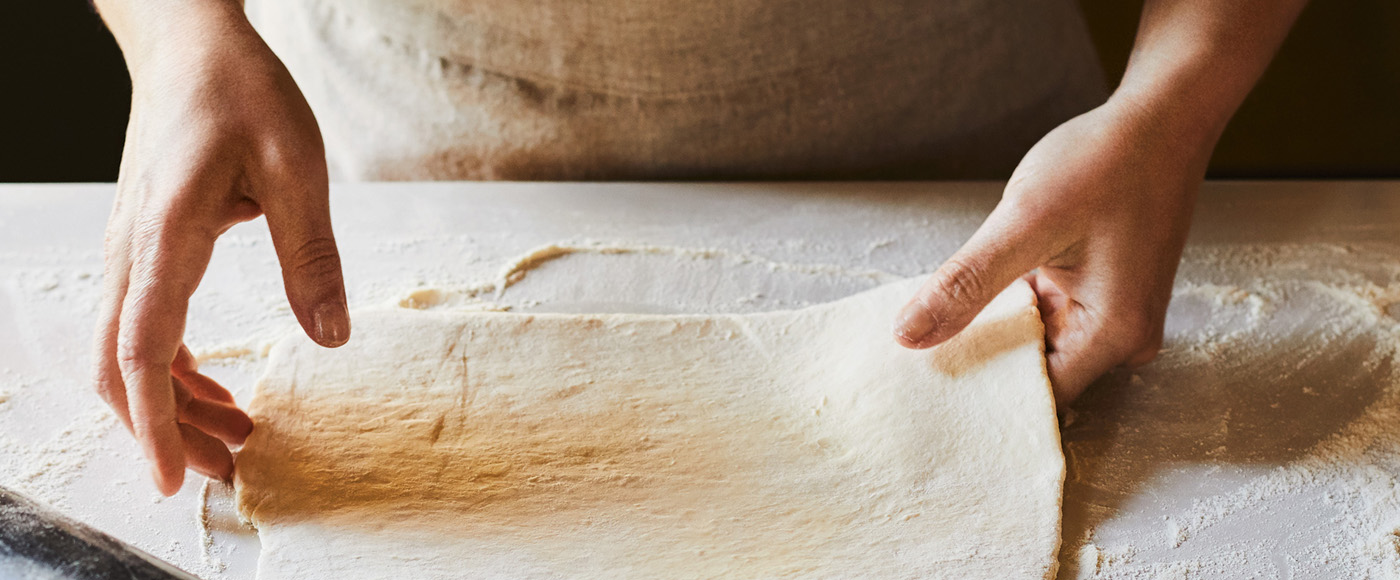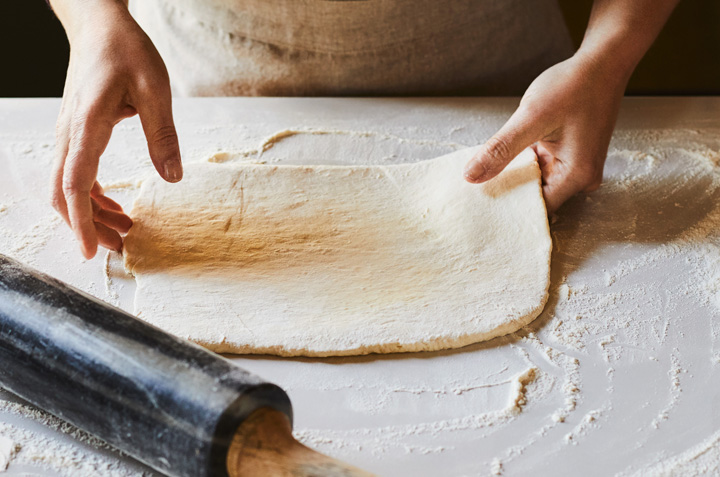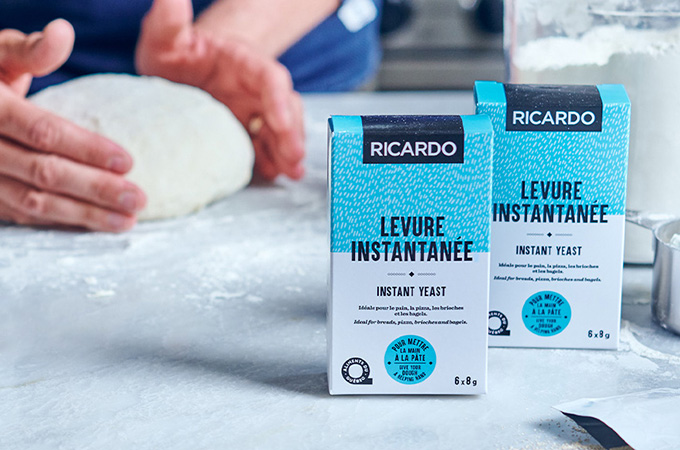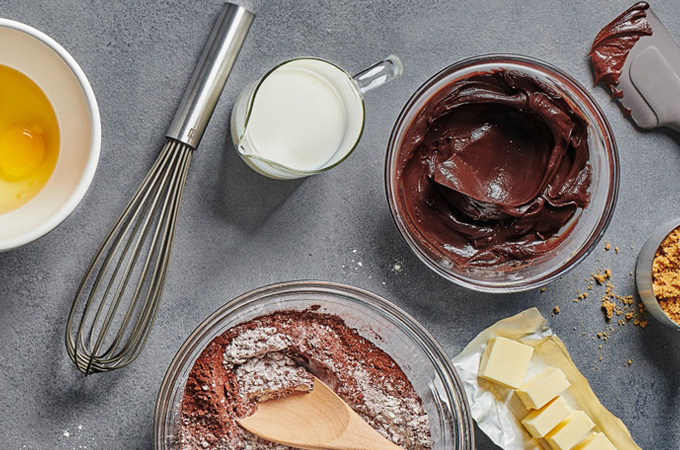1. Test your yeast
Yeast is an essential ingredient when it comes to most baking, which is why it needs to be stored correctly. To preserve a container of dry yeast, store it in the freezer once opened. Each time you need to use some, check the expiry date and then test to see if it’s still active. To do this, mix 1 teaspoon of yeast with a bit of sugar and warm water. If it’s bubbling after 10 minutes, it’s still good to use.
2. Measure flour correctly
Baking is all about precision, which is why you need to measure your ingredients carefully. When it comes to flour, avoid dunking the measuring cup right in the bag, as flour is super dense. Start by shaking the bag to loosen up the flour, and then, using a spoon, scoop it into your cup and then skim a knife over the surface to even it out. Better yet, if you have a kitchen scale, use it; it’s by far the most accurate way to measure flour.
3. Keep ingredients cold
Love baking pies and tarts? To get a crisp and flaky shortcrust pastry every time, make sure that all your ingredients and tools are nice and cold before you begin working on your dough. You can even put your flour in the freezer for up to 30 minutes. In short, the colder the ingredients, the colder the dough, the better the results.
4. Check your baking powder
Baking powder is an important ingredient when it comes to making cakes rise, so always test it before getting started. Simply drop a teaspoon of it into a bit of warm water. If the water stays flat, your cake will not rise. If the mixture starts to bubble, however, this means the baking powder is still active and you’re good to go.
5. Mimic the ideal proofing environment
Many doughs, including pizza dough, need a warm and humid spot to rise. This isn’t always easy, especially during Canadian winters. One trick is to let your dough rest in a closed microwave with a glass of hot water. This will provide the ideal environment for the yeast to do its thing.
Love to bake? Then be sure to read our article on how to stay organized while baking:



